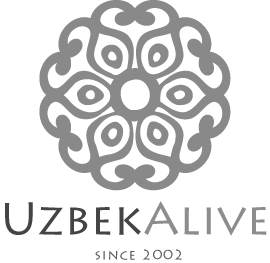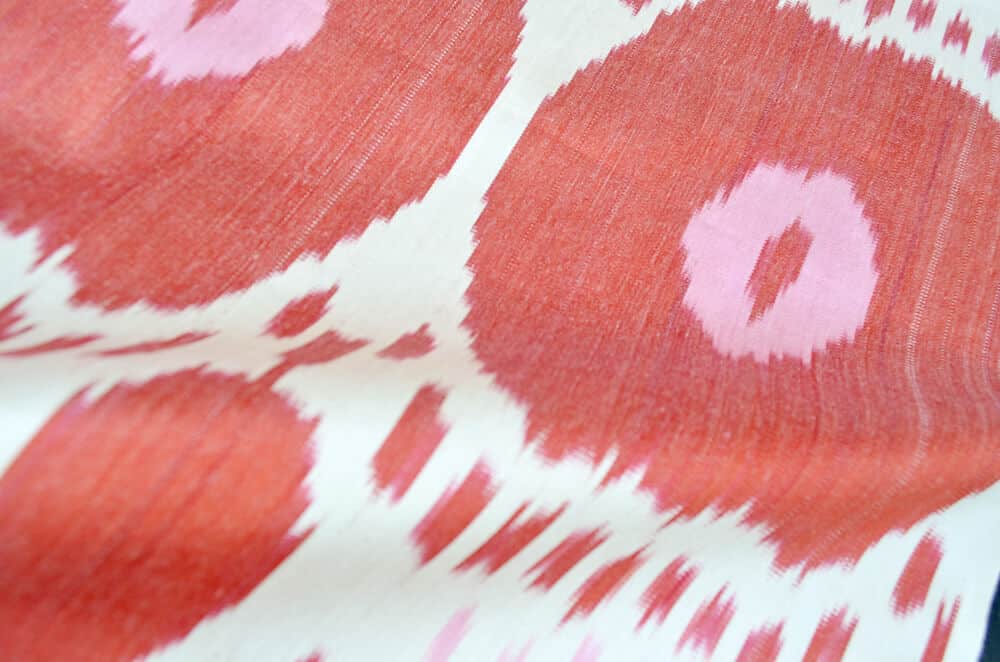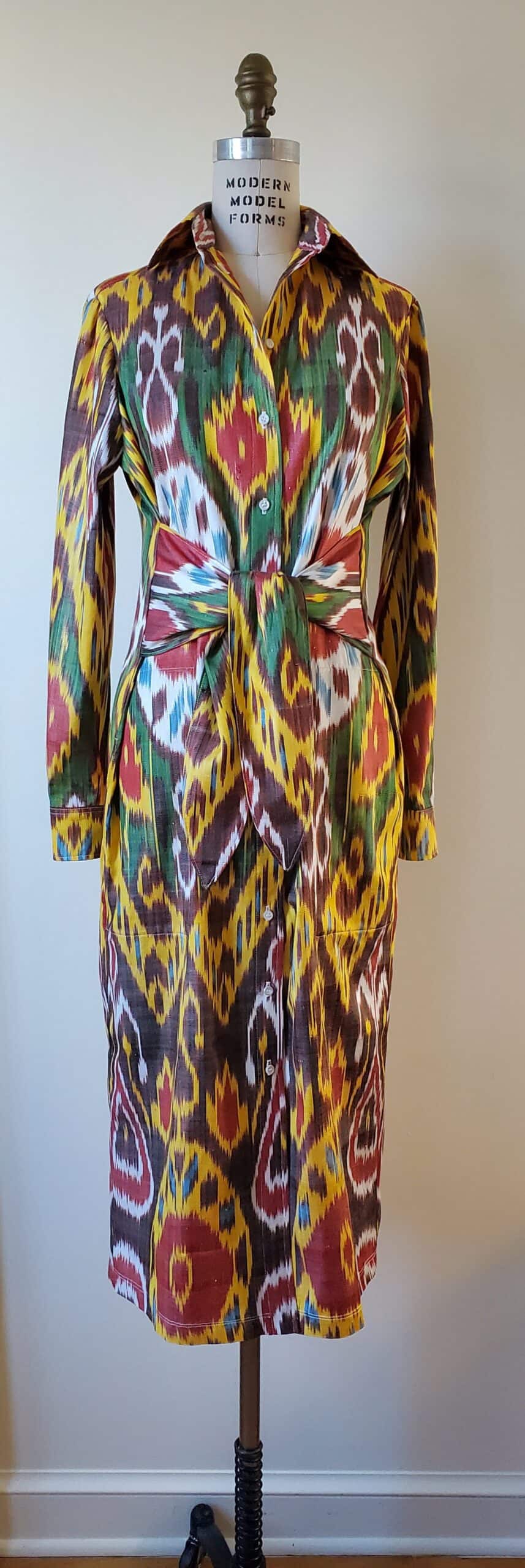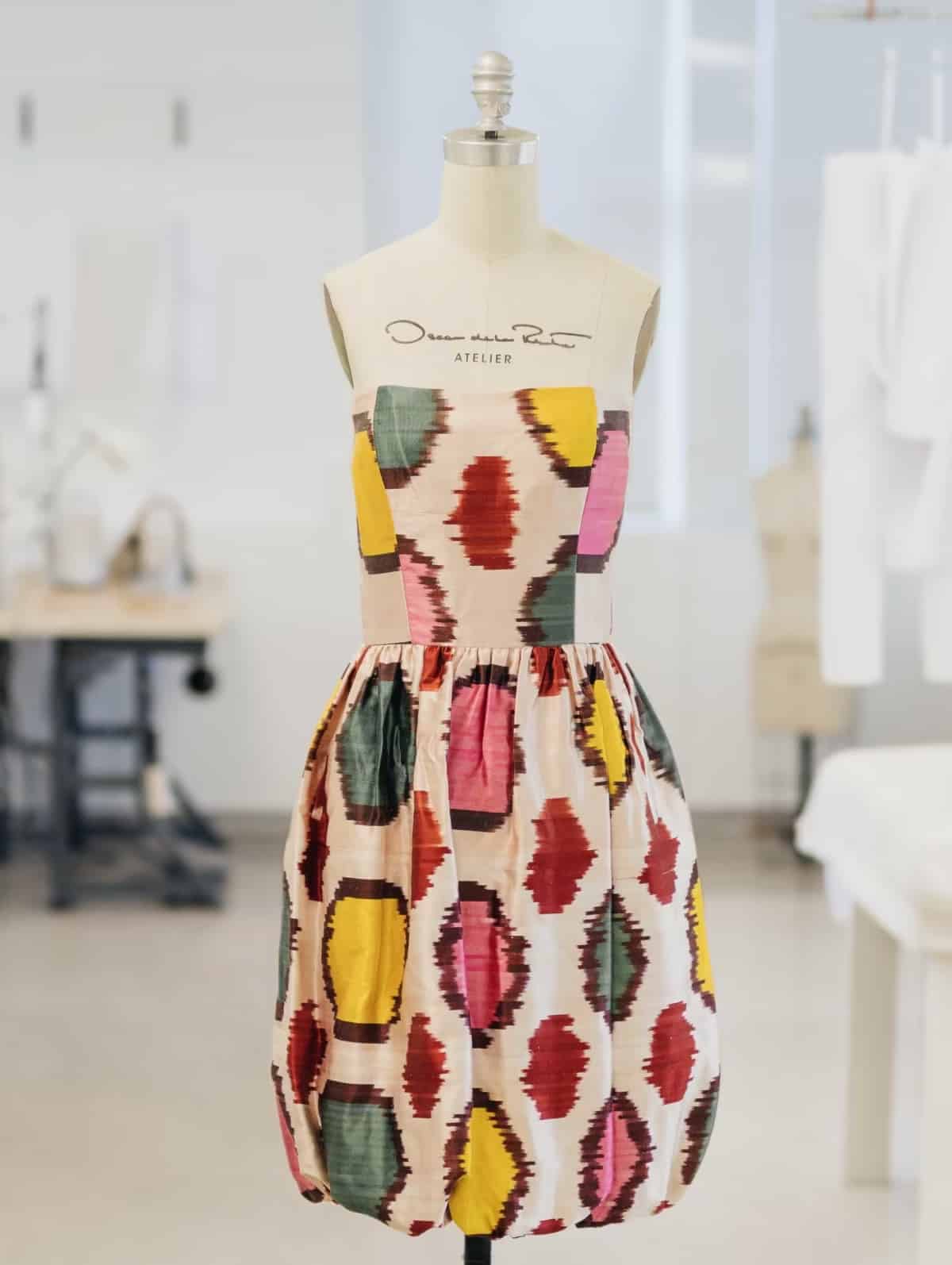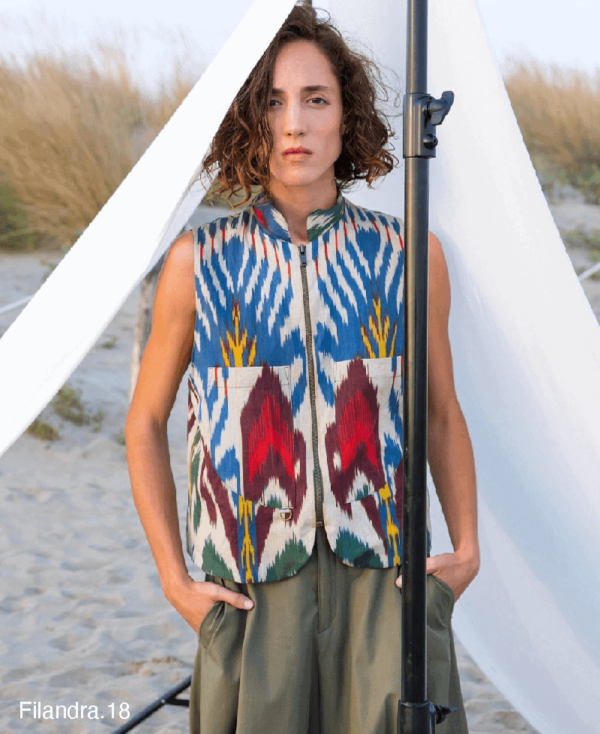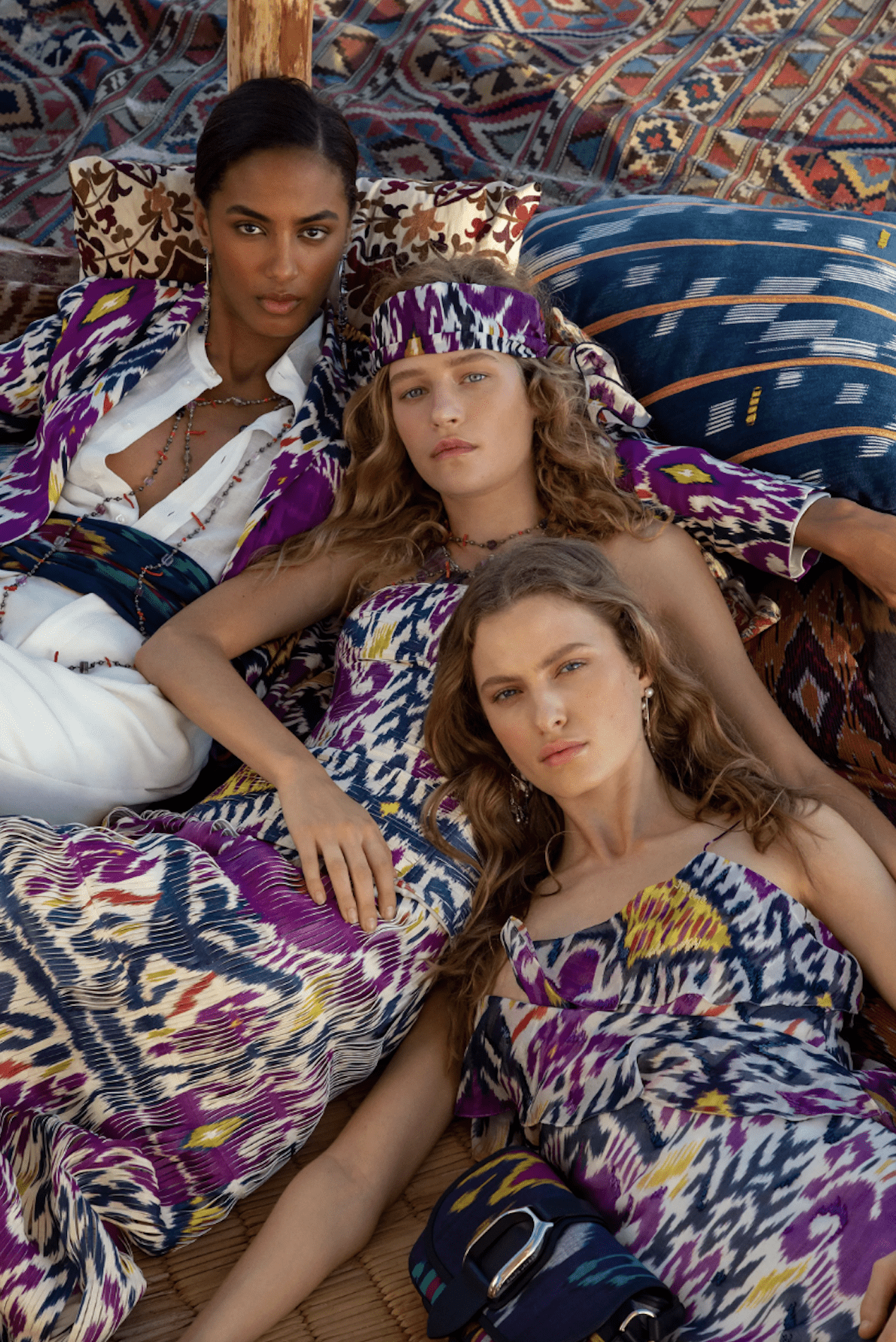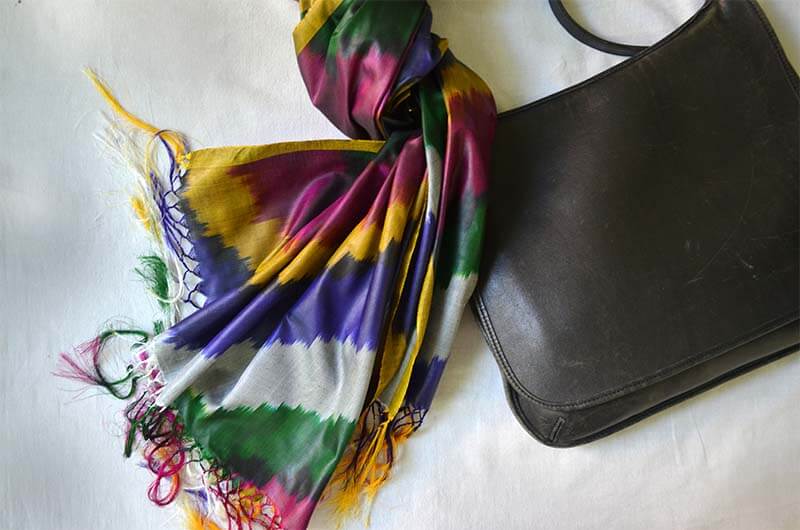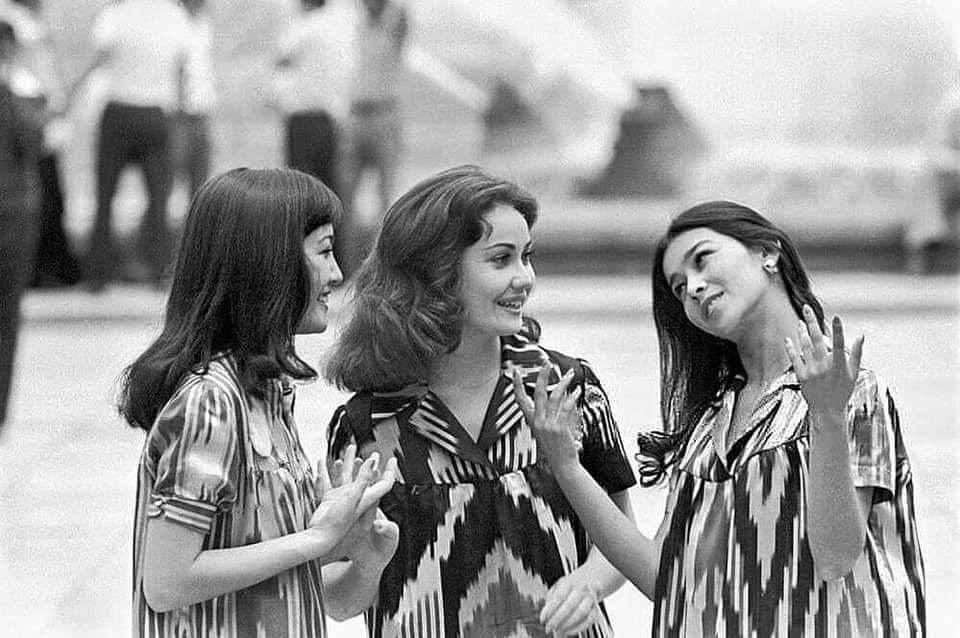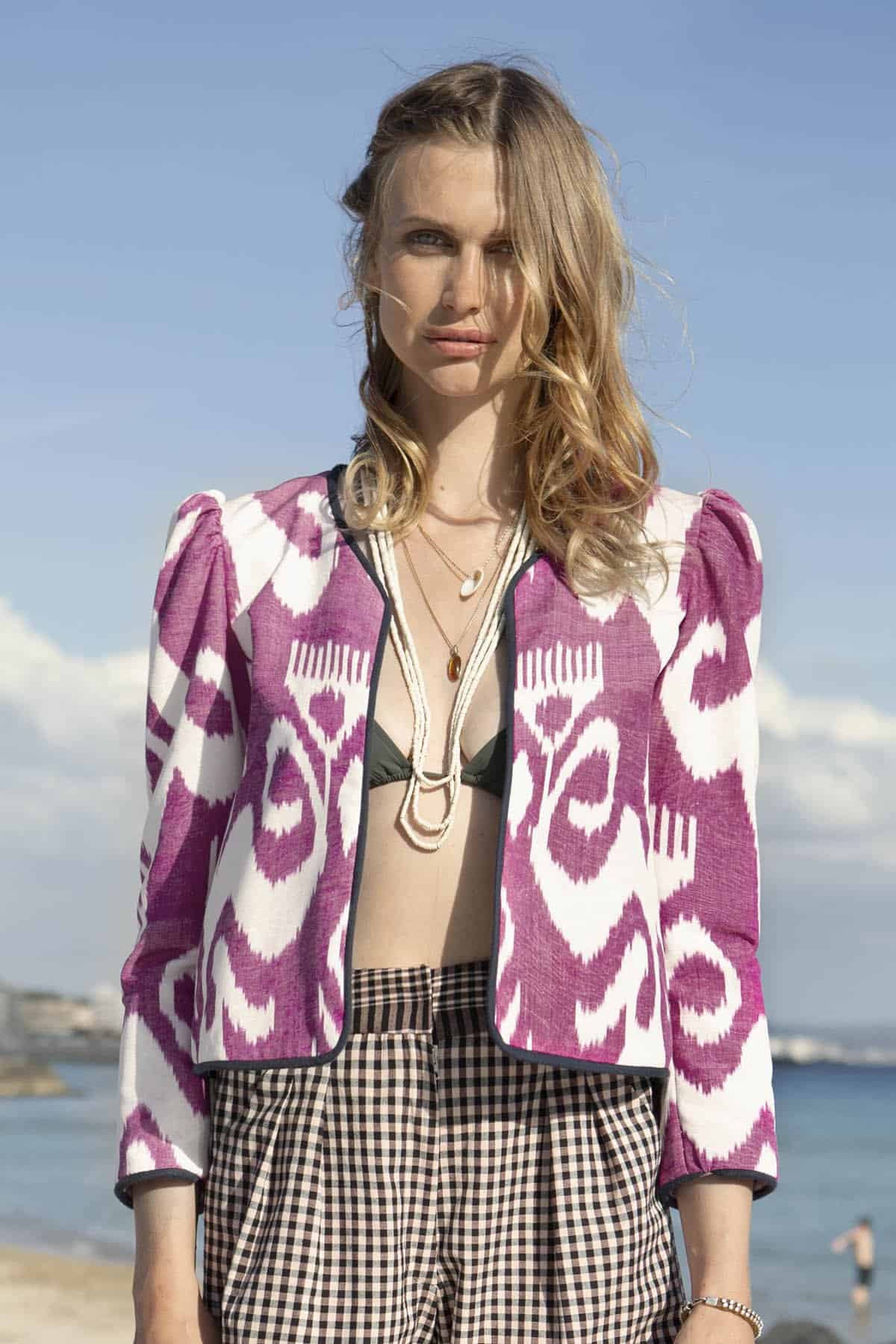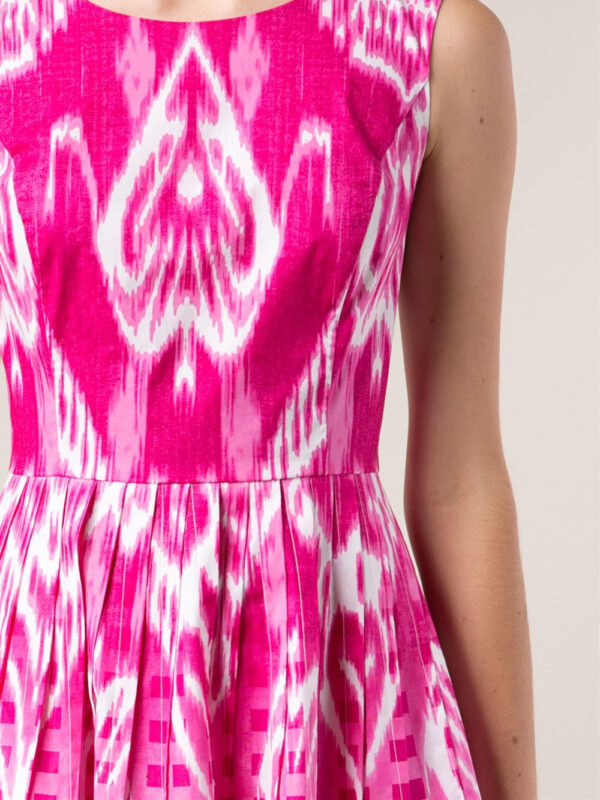How much of ikat fabric will I need for a dress?
How much of ikat fabric will I need for a dress? This was a question posed by Roberta, one of our Italian customers. This post is our answer to Roberta, along with the reasoning behind it, so you can adapt the calculation for your own needs.
Buying handmade ikat fabrics can be thrilling, but figuring out how much you'll need for a dress can be tricky. This is especially true because Uzbek ikat fabrics are typically narrow in width and require careful ikat pattern matching. Width of Uzbek ikat fabrics, depending on a pattern, can vary from 35cm to around 50cm (13.7" to 19.6"). We specify this measurement in each product description.
Crafting Chic: How Chicago-based Fashion Designer Used Uzbek Ikat Fabric
Using Uzbek ikat fabrics in fashion has been in a trend in many decades. These unique handmade fabrics intertwine rich historical traditions, artisanal craftsmanship and timeless elegance. An excellent example of its versatility can be seen in the below post, where we talk of a fashion designer Kyle Pearson and how skillfully she used our ikat fabric for making fabulous garments, pairing opulence, cultural wealth and a contemporary style.
The Unique Appeal of Uzbekistan Ikat Fabrics
One of the most captivating aspects of Uzbekistan ikat fabrics is the way they are created. Handmade with patience and precision, these fabrics are known for their narrow width, a characteristic determined by the width of traditional wooden handlooms. While this might seem like a limitation, it's actually the thing that makes these fabrics so unique, especially in today’s world of mass production.
Best Use of Uzbek Ikat Fabric
Uzbek ikat use varies depending on one's interests. We have customers who make them for tailoring dresses or for decorating homes. Before we dive into how Uzbek fabric uses let's start with a definition of Uzbek ikat.
Uzbek ikat fabric is an artisanal textile that is hand dyed and woven on traditional handlooms using a resist-dyeing method. This method of making the fabric is traditional to many regions of Uzbekistan with Margilan being the cradle of ikat fabric production of not only Uzbekistan but the entire Central Asia. The resulting ikat design patterns and colors are bold and unique to Uzbekistan, making them a popular choice of unique textile among fashion designers and home decorators.
It is important to note that In December 2017 the traditional methods of manufacturing Uzbek ikat fabrics were included in the UNESCO Register of Good Safeguarding practices. What does this mean? It means that the art of ikat making survived within families overcoming repressions and bans on artisanal ikat making during the Soviet era. The ikat making in Uzbekistan was safeguarded by a small community of descendants of ikat artisans over the generations until the Soviet Union collapsed and it became legal to manufacture ikats in a traditional way. We have a great post talking just about that here.
We prepared several areas where Uzbek ikat fabrics are widely used:
3 Reasons Why You Need a Silk Ikat Scarf This Fall
Now that Fall is just around the corner, it is time to take out sweaters, coats, cardigans, and scarves to keep yourself warm and look chic. As the temperature outside begins to drop, you would want to stay warm and cozy without sacrificing your touch of elegance. A scarf draped around the neck is the easiest yet the best way to look modest and glamorous this fall.
Additionally, silk clothing is exceedingly in request, and people from all around the world are looking for distinctive color variations. This incorporates silk ikat scarves as well. Modern ikat scarves have become a favorite accessory for women.
5 Fashion Designers To Follow Who Use Uzbek Ikat Fabrics
Many people nowadays use the Instagram because of its immense popularity for sharing visual content. If you enjoy the world of fashion and textiles, following these fashion designers who use Uzbek ikat fabrics can be both entertaining and inspirational for you.
Ikat has seen a rapid rise in popularity over the last several years, and its comeback has generated a lot of buzz on Instagram. Several Instagram accounts have managed to captivate audiences who are interested in Ikat. So if you find yourself getting lost on your Instagram feed daily in search of gorgeous Ikat patterns, we have made your job easier. We have compiled a list of the top 5 Instagram accounts of fashion designers whose Instagram accounts are worth keeping tabs on.
Ikat patterns in Ralph Lauren 2022 Resort collection
Ralph Lauren, one of the most well-known names in the American fashion industry, released the spring-summer collection 2022 in Dubai. This season's collection features ikat patterns inspired by motifs that are traditional to Uzbekistan, Tajikistan, and other cultures around Central Asia.
Ethnic designs and textiles such as ikat have always served as a source of inspiration for famous couturiers, fashion houses, designers, and artists. Oscar de la Renta and Gucci drew inspiration from the long and rich legacy of beautiful Uzbek ikat textiles and showed them on their fashion runways. Now, Ralph Lauren is the latest designer to incorporate Uzbek ikat designs into his spring collection.
Uzbek silk scarf as an investment in accessories
Silk scarves and minimalism
We live in interesting times when more and more people are becoming aware of the impact of the fashion industry on the environment. We have been so used to buying clothes for one season simply because they are so cheaply available (and "cheaply" always translates into low quality). This blog post is about how you can invest in silk scarf accessories and still be stylish with a capsule wardrobe of essenial clothes.
“The fashion industry is the second largest polluter in the world just after the oil industry. And the environmental damage is increasing as the industry grows.”
SustainYourStyle.org
“Nothing to wear, nowhere to hang” syndrome
Having a closet full of clothes and still having nothing to wear means several things:
- Wardrobe is driven by impulsive emotional purchases. This is how you end up with a lot of clothes, which do not work together.
- Lack of styling knowledge and this point is a huge one. Creating a look that’s put together and chic is both art and science. This requires understanding your body type, your skin tone, how textures and colors enhance your look and beauty, and a million other things.
Retro Ikat fabric from Soviet Uzbekistan
I love photography, especially black and white photography, especially black and white photography with stories. This post is about Uzbek Soviet ikat dresses made of ikat fabrics in images of 20th century.
Soviet era and Industrial Age
The Soviet Union, a newborn country in the early 20th century which united 12 relatively poor republics (lated added 3 baltic states), did not have time and resources for luxuries. The goal was to provide basic standards of living to everyone - a very noble goal, I must say, given that most people had very low standards of living. Hence, luxury fabrics like hand woven Ikats became a sign of bourgeoise and ikat making traditions became significantly simplified.
Uzbek ikat fabrics in collections of Alix of Bohemia
We are used to hearing these grand names of haute couturiers who use Uzbek ikat fabrics for their collections like John Galliano and Oscar de la Renta. In light of how much media covers work of big fashion houses smaller fashion brands are almost left unnoticed. Meanwhile they seem to be leaving some serious dents on fashion runways.
The other day I was googling something ikat related. The Google Almighty - sometimes this is how I feel we should start referring to Google since so much depends on it - led me to a website of a fashion designer whose name I never heard before – Alix of Bohemia.
Who Is Alex of Bohemia?
Alix of Bohemia is a fashion brand by Alix Verley-Pietrafesa, an Italian textile, French arts genes mixed with education in the University of Scotland, further infused by travels round the world, currently creating from New York City. The bohemian part comes from her passion for vintage things and ethnic textiles. Alix uses it all – embroidery, ikats, kantha quilting, block print fabrics. Of course, it is the Uzbek ikat fabrics part which we find the most interesting.
Hot pink ikat fabric and grande Oscar de La Renta
We have something in common with great Oscar de la Renta. It’s not only love for Uzbek ikat fabrics. It is specifically love for hot pink and white ikat fabric.
Take a look at this summer dress from Oscar de la Renta’s Resort 2015 collection. This is a dress made of a Ikat pattern fabric combined with a gingham pattern. I don’t know if the fabric is a handmade ikat fabric. From the description of the dress at www.matchesfashion.com this dress is Ikat and gingham print versus being a real ikat fabric. You can read more about a difference between ikat fabrics and ikat print fabrics following this link.
